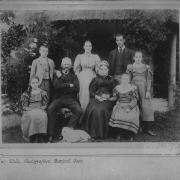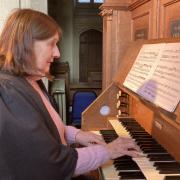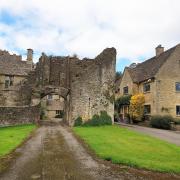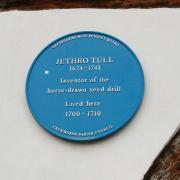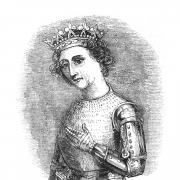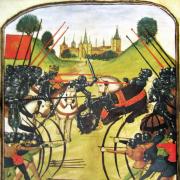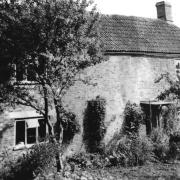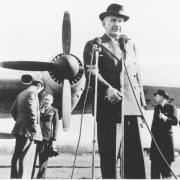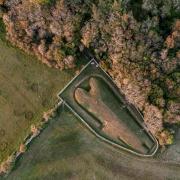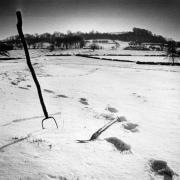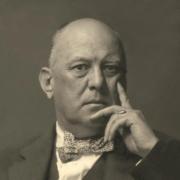Stephen Roberts transports us back to a chaotic period in history, when lawlessness reigned
I know. ‘Anarchy in the Cotswolds’. It sounds like the summer season when you’re trying to drive through Burford or Stow-on-the-Wold, but I’m actually going to transport us back to the 12th century’s Anarchy.
This was a chaotic period between 1135-53 when law and order went out of the window and we had a brutal civil war going on for 18 years. It was arguably the most lawless period in England's history. What exactly was it all about and, aside from the fact that the war’s most famous incident occurred in our area, how did it affect the Cotswolds?
Firstly, some background. Henry I, youngest son of the Conqueror, had it sorted with an heir and spare. The heir, Prince William, made the mistake of taking ship with a drunken crew and was drowned in 1120. The moral of that particular tale? If your captain’s had a few, stay on shore. The problem now for Henry was that the spare was a lass, his only daughter Matilda (or Maud). It would soon be time for Maud to come into the garden and have a crown on her head. Henry assiduously prepared the way by getting his barons to swear an oath of allegiance to his daughter in 1127 before he headed off into the eternity on December 1, 1135.

This was a time when might was right, though, and there was a bruiser waiting in the wings: Stephen, Matilda’s cousin, who was to seize the throne when the time came. Stephen and Matilda were both grandchildren of the Conqueror, but the lass had right on her side as the surviving child of King Henry I. Stephen had a lesser claim, the son of Henry’s younger sis, Adela. He had that other attribute though; might. And there you have it. With Stephen’s posterior plonked on the throne, his forces would vie with those of Matilda for control of the country. Stephen had been one of those magnates who’d sworn the oath of allegiance to Matilda so no doubt her followers thought they had every right to rebel against the usurper. The war’s early stages saw the Anglo-Saxon Chronicle record laconically how desperate conditions had become: ‘And men said openly that Christ and his saints slept’. In other words, no-one was looking out for folk, even the Son of God, as armed bands rampaged across the countryside. It was the Victorians, ever ready with a pithy phrase, who dubbed the period ‘The Anarchy’.


Matilda seems to have had much of England ranged against her as the church supported Stephen as did many of the Norman nobles who didn’t fancy Matilda’s connection with Geoffrey of Anjou and his ‘Angevins’. It seems the ‘English Party’ was for Stephen, who did his level best, however, to even things up, his ’ineffective rule’ soon having Robert, Earl of Gloucester, Matilda’s half-brother and illegitimate son of Henry I, rebelling in her favour (in 1138). The Scots also took the opportunity to invade England. One of Stephen’s early moves was to try and subdue the west, including Gloucestershire, taking Hereford along the way.
To explain the Anjou / Angevins bit, Matilda was married to Geoffrey of Anjou (her second marriage of 1128) so was actually across the Channel as the war’s opening moves were played out, but invaded England in 1139. Matilda’s invasion was successful meanwhile and she soon controlled most of the west, including our part of the world, which became her stronghold, much to Stephen’s chagrin. The Cotswolds happened to be part of that Matilda enclave but with large territories east of our area under Stephen’s control. This led to the Cotswolds featuring in the wars quite a bit.

Stephen, getting twitchy about his bishops and their loyalty (or otherwise) was holding court at Oxford in June 1139 when he demanded that various bishops surrender all their English castles to him, with said bishops being arrested with the exception of Nigel, Bishop of Ely, who holed himself up in Devizes Castle (Wiltshire) which was duly besieged leading to the bishop’s capitulation. More castles popped up to defy Stephen though, the so-called ‘adulterine’ (illegal) ones as Matilda’s adherents threw up fortresses in the south-west in the likes of Winchcombe, Upper Slaughter (an apt name for a castle erected during ‘The Anarchy’) and Bampton.

Stephen could not tolerate the solid wedge of territory that had now declared for Matilda, who established her alternative court at Gloucester, so he set about winning back the region, attacking firstly Wallingford and then Trowbridge... capturing castles at Malmesbury and South Cerney along the way. Stephen’s all-out bid to flatten Matilda’s powerbase had to be put on hold when he had to return to London to protect his own HQ.
Stephen was actually captured in February 1141, which offered an end to the hostilities as he was taken to Gloucester to meet with Matilda before being held in Bristol Castle. Matilda meanwhile planned her own coronation in London, but the city was still hot for Stephen and, when its citizens rose up against Matilda, she was obliged to flee back to Oxford, her tail betwixt her legs.


After being held for several months, Stephen was actually released, a prisoner exchange in November 1141 with the Earl of Gloucester, who’d been captured after the so-called ‘Rout of Winchester’ which also saw Matilda forced to take refuge inside Devizes Castle. Stephen kept up the pressure, besieging Cirencester and Bampton. Matilda wouldn’t take any of this lying down and would have her own great seal and mint in defiance of Stephen’s authority. And so, it continued …
And the war’s most famous incident? Well, that occurred in Oxford in December 1142. In New Road, near the Victorian railway station, is what’s left of Oxford Castle, a rectangular keep built by Robert D’Oyley which was once used as a prison and sported four towers back in its heyday. It was from here, when Oxford was besieged by Stephen’s forces, that Matilda hatched an escape, dressed all in white like Wilkie Collins’ ‘The Woman in White’ and pluckily making her bid for freedom with a trio of companions, walking over the frozen river to Wallingford and ultimately Abingdon. They must have resembled a spectral quad among the frost and ice. Matilda lived to fight another day. The romantics have Matilda shinning her way down a rope out of St George’s Tower, the realists give us a more prosaic version as she sneaks out of the back door, a.k.a. the postern gate. Whatever the truth, the war turned in Stephen’s favour, his victory at Faringdon, Oxfordshire, when he captured the castle, proving semi-decisive in 1145, although the war still rumbled on for several years after that (so not entirely decisive).


The Empress, as Matilda was also known because of her first marriage to the Holy Roman Emperor, Henry V (in 1125), didn’t exactly outdo Stephen in the popularity stakes and her own cause was weakened by both her irascible nature and the loss of the Earl of Gloucester, who died in 1147. Reluctantly, Matilda turned her back on England in 1148, withdrawing to Normandy which hubbie Geoffrey had conquered for her cause in 1143. The war in England still continued in her name, however, for another half-a-dozen years with her young son, Henry, now taking up the Matilda mantle.

The final years of Stephen’s reign would be relatively peaceful though compared with what had gone before although he rowed with the church and failed to get any acknowledgement that his son, Eustace, should succeed him. And quite right with a name like that. Come 1153, Stephen’s castle at Malmesbury was besieged by young Henry, whilst Stephen intensified his own siege of Wallingford Castle, which led to the two armies finally facing one another across the Thames in July 1153. Just when a final dust-up seemed in the offing, though, a peace deal was brokered.
It was the Treaty of Wallingford (1153) that brought it all to an end, allowing Stephen to retain his throne until he popped his clogs, at which point Matilda’s son – the future Henry II – would take the spoils. Eustace, the son with a name surely unsuitable for kingship, had conveniently died. Hostilities duly ceased. Come 1154, Stephen would be dead, and Henry II acceded as the first of our Angevin kings. You know him, he was the monarch who had the fateful spat with his archbishop, Thomas Becket. But that’s another story…
The Cotswolds at long last was able to resume its more peaceable existence as Christ and his saints awoke from their slumbers.

CHRONOLOGY
1120 – Death of Henry I’s male heir, Prince William, in the White Ship disaster.
1127 – Henry I obliges his barons to swear an oath of allegiance to his daughter Matilda.
1135 – Death of Henry I. Stephen seizes the throne precipitating the start of ‘The Anarchy’.
1138 – Robert, Earl of Gloucester, Matilda’s half-brother, rebels in her favour.
1139 – Matilda invades England to enforce her rightful claim to the English throne.
1141 – Stephen is captured, meets Matilda at Gloucester, then is imprisoned at Bristol.
1142 – Matilda’s famous escape from Oxford Castle and walk across a frozen Thames.
1145 – Stephen’s semi-decisive victory at Faringdon as the castle falls to him.
1148 – Matilda quits England the year after the death of Robert, Earl of Gloucester.
1153 – The Treaty of Wallingford finally brings The Anarchy to a conclusion.
1154 – Death of Stephen and accession of Matilda’s son as Henry II.
References
History of England (W. McElwee, 1960)
Discovering Castles in England and Wales (J. Kinross, 1973)
A Dictionary of British History (Ed. J.P. Kenyon, 1981)




